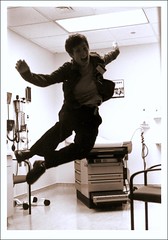HEALTH PERCEPTION – HEALTH MANAGEMENT PATTERN
Health maintenance ineffective
Therapeutic regimen: effective management
Therapeutic regimen: ineffective management
Therapeutic regimen: Family, ineffective management
Therapeutic regimen: Community, ineffective management
Noncompliance (specify)
Health-seeking behaviors (specify)
Energy Field disturbance
Environmental interpretation syndrome, impaired
Latex allergy response
Latex allergy response, risk for
Falls, risk for
Infection, risk for
Injury (trauma), risk for
Protection, ineffective
Poisoning, risk for
Suffocation, risk for
Surgical recovery, delayed
Perioperative positioning injury, risk for
NUTRITIONAL-METABOLIC PATTERN
Nutrition: more than body requirements, imbalanced
Nutrition: more than body requirements, risk for imbalanced
Nutrition: less than body requirements, imbalanced
Breastfeeding, ineffective
Breastfeeding, effective
Breastfeeding, interrupted
Infant feeding pattern, ineffective
Aspiration, risk for
Swallowing, impaired
Nausea
Oral mucous membrane, impaired
Dentition, impaired
Fluid volume imbalance, risk for
Fluid volume, risk for deficient
Fluid volume deficient
Fluid volume excess
Skin integrity, impaired
Skin integrity, risk for impaired
Tissue integrity (specify type), impaired
Body temperature, risk for imbalanced
Thermoregulation, ineffective
Hyperthermia
Hypothermia
Failure to thrive, Adult
ELIMINATION PATTERN
Constipation
Constipation, risk for
Constipation, perceived
Diarrhea
Bowel incontinence
Urinary elimination, alteration
Urinary incontinence, functional
Urinary incontinence, reflex
Urinary incontinence, stress
Urinary incontinence, urge
Urinary urge incontinence, risk for
Incontinence, total
Urinary retention
ACTIVITY-EXERCISE PATTERN
Activity intolerance, risk for
Activity intolerance (specify level)
Aspiration, risk for
Adaptive capacity, decreased, intracranial
Infant behavior, disorganized
Infant behavior, risk for disorganized
Infant behavior, readiness for enhanced organized
Fatigue
Physical mobility, impaired
Bed mobility, impaired
Walking, impaired
Wheelchair mobility, impaired
Wheelchair transfer ability, impaired
Development, risk for delayed
Dysreflexia
Autonomic dysreflexia, risk for
Disuse syndrome, risk for
Self-care deficit (specify: bathing/hygiene, dressing/grooming, feeding, toileting)
Diversional activity deficient
Home maintenance, impaired
Dysfunctional Ventilatory Weaning Response
Ventilation, impaired spontaneous
Airway clearance, ineffective
Breathing pattern, ineffective
Gas exchange, impaired
Cardiac output, decreased
Tissue perfusion, alteration (specify)
Peripheral neurovascular dysfunction, risk for
Perioperative positioning injury, risk for
Growth and development, delayed
Growth, risk for disproportionate
Wandering
SLEEP-REST PATTERN
Sleep-pattern disturbance
Sleep deprivation
COGNITIVE-PERCEPTUAL PATTERN
Pain, acute
Chronic pain
Sensory perception, disturbed (specify)
Unilateral neglect
Knowledge deficit (specify)
Memory, impaired
Thought processes, disturbed
Acute confusion
Chronic confusion
Decisional conflict (specify)
SELF-PERCEPTION-SELF-CONCEPT PATTERN
Fear
Anxiety
Anxiety, death
Hopelessness
Powerlessness
Powerlessness, risk for
Loneliness, risk for
Self-esteem disturbed
Chronic low self-esteem
Situational low self-esteem
Risk for self-esteem situational low
Body image disturbance
Personal identity disturbance
ROLE-RELATIONSHIP PATTERN
Anticipatory grieving
Dysfunctional grieving
Chronic sorrow
Role performance, ineffective
Social isolation
Impaired social interaction
Relocation stress syndrome
Risk for relocation stress syndrome
Family processes, interrupted
Dysfunctional family processes: alcoholism
Risk for impaired parenting
Impaired parenting
Risk for impaired parent/infant/child attachment
Parental role conflict
Caregiver role strain
Impaired verbal communication
Risk for violence, directed at self
Risk for violence, directed at others
SEXUALITY-REPRODUCTIVE
Sexual dysfunction
Ineffective sexuality patterns
Rape Trauma syndrome
Rape-Trauma syndrome: compound reaction
Rape-Trauma syndrome: silent reaction
COPING-STRESS TOLERANCE PATTERN
Ineffective coping
Defensive coping
Community coping, ineffective
Community coping, readiness for enhanced
Ineffective denial
Impaired adjustment
Post-Trauma syndrome
Risk for post-trauma syndrome
Family coping: readiness for enhanced
Ineffective family coping: compromised
Ineffective family coping: disabling
Risk for violence, directed at self
Risk for violence, directed at others
Risk for suicide
Self-mutilation
Risk for self-mutilation
VALUE-BELIEF PATTERN
Spiritual distress
Risk for spiritual distress
Spiritual Well-Being, readiness for enhanced

















